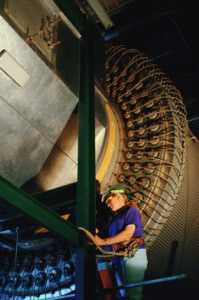The Future of LNG Supplies in the Middle East
 Of the world’s total gas reserves, the Middle East (mainly Qatar and Iran) provides 43%. However, just because the Middle East has vast resources doesn’t mean it doesn’t rely on imports for its energy. The LNG industry is progressing rapidly due to high demand around the globe.
Of the world’s total gas reserves, the Middle East (mainly Qatar and Iran) provides 43%. However, just because the Middle East has vast resources doesn’t mean it doesn’t rely on imports for its energy. The LNG industry is progressing rapidly due to high demand around the globe.
While Qatar provides 30% of LNG to gas-deficit regions, these areas have begun shifting from relying on the Middle East for the majority of LNG exports as US and Australia are making strides to overtake this position. Learn more about these emerging trends.
Because the industry is progressing at a fast pace, countries that are rich in resources are competing to supply LNG, including the US.
Major LNG Projects in the US
These projects have been approved by the Federal Energy Regulation Commission (FERC) and provide a total capacity of 9.22 billion ft3/d. Exports will increase profit, create millions in tax revenue and produce thousands of jobs in the US. Learn more about the major LNG projects in the US.
- Sabine Pass: Cheniere Energy, among the leading companies in North America, is developing onshore LNG export terminals and related natural gas pipelines along the U.S. Gulf Coast. The Sabine Pass LNG terminal is made up of 1,000 acres of land that run along the Sabine Pass River on the border between Texas and Louisiana. It’s 3.7 nautical miles from the coast, with two docks and 5 storage tanks.
- Corpus Christi: Corpus Christi Liquefaction, LLC is a subsidiary of Cheniere Energy. This project involves the development of an export terminal at one of Cheniere’s existing sites. This is being designed with an expected production capacity of up to 13.5 million tonnes per annum (mtpa) of LNG. This site is located at the La Quinta Channel in San Patricio County, Texas on 1,000 acres. It’s approximately 15 nautical miles from the coast.
- Cameron LNG: This proposed project will add natural gas liquefaction and export facilities to its existing terminal in Hackberry, Louisiana. This terminal is along the Calcasieu Ship Channel, located 18 miles from the Gulf of Mexico. These facilities will be comprised of three trains that will be able to export up to 12 million mtpa of liquefied natural gas.
- Cove Point LNG: Dominion Cove Point LNG, LP is the owner of the Dominion Cove Point Liquefaction Project, and is a joint venture between IHI E&C and Kiewit Energy Company. Cove Point has seven storage tanks at the terminal: four original, one placed in 2004, and two placed in 2008.
- Freeport LNG: Freeport LNG Development LP is a terminal located on Quintana Island which utilization the dock, storage and equipment that is already in place. Freeport LNG’s natural gas liquefaction project is set to add approximately 13.9 million metric tons per year of nominal liquefaction capability to its facilities.
These US products continue to be in construction to bring US revenue and produce jobs.
If you’re interested in learning about CPV Manufacturing and their products, contact us today.

